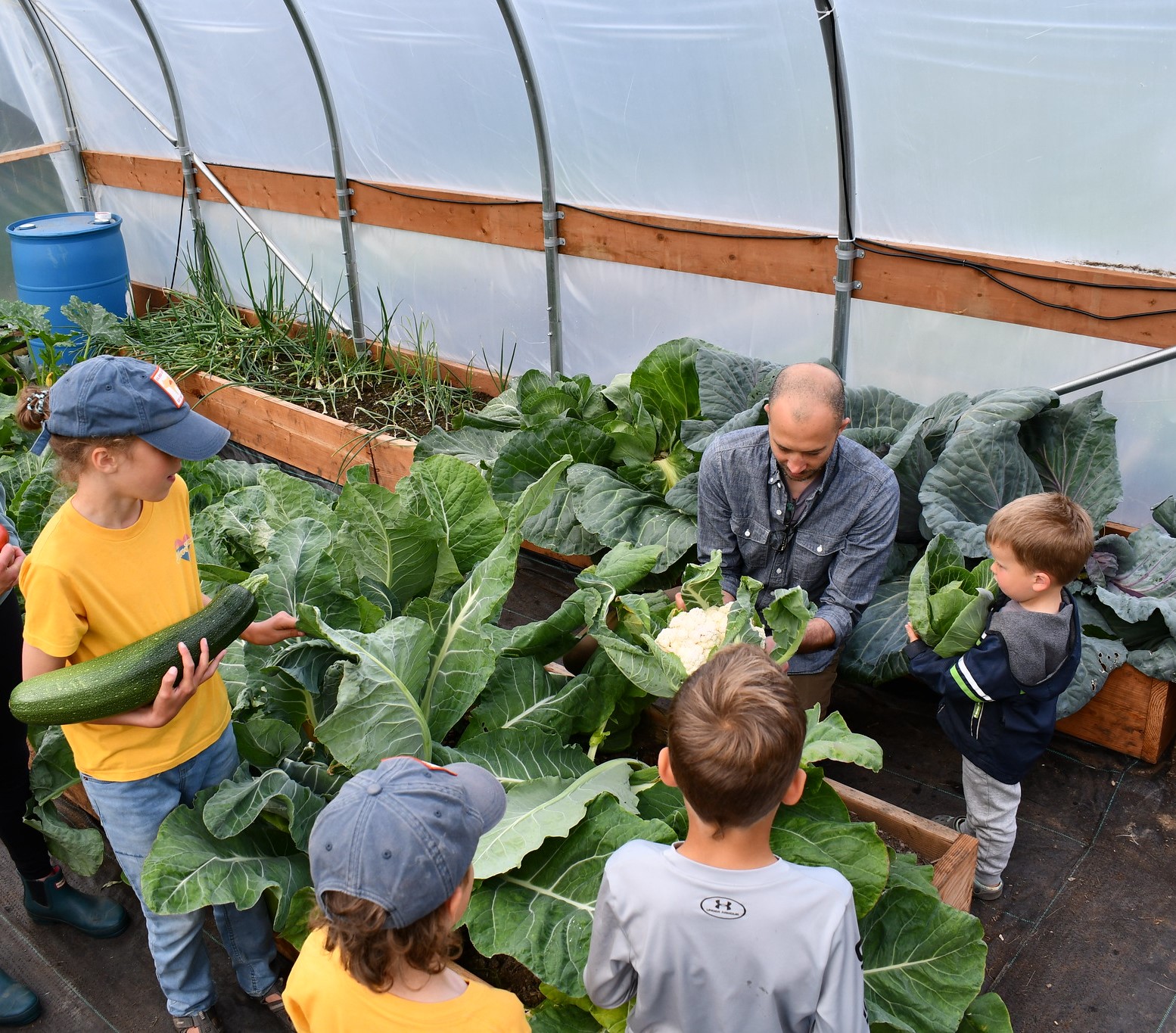
Alaska is one of the fastest warming regions on Earth. It is warming faster than any other state in the U.S., and as such, faces numerous issues and opportunities associated with climate change. In the coming decades, agriculture in Alaska will have to adapt to these challenges and opportunities. The Northwest Climate Hub partnered with the Alaska FFA Association to create an engaging and scientifically rigorous secondary education unit on climate change and agriculture in Alaska to help youth prepare for future changes in their environment. Climate change education offers the opportunity to educate youth on how to understand their environment, build skills to work with the natural environment, and mitigate and adapt to climate change in agriculture and natural resources.
This unit includes lessons on the difference between weather and climate, the basics of climate change, water quality, soils, agricultural economics in a changing climate, interviews with community members, and a group presentation on agricultural issues in Alaska. Below is a list of the lessons, presentations, and materials required for this curriculum (note these items were chosen by the Executive Director of Alaska FFA Association and does not imply endorsement by the U.S. Department of Agriculture of any product or service).
Lesson 1: Weather or Climate
Students learn about the difference between weather and climate. This lesson uses images to support making connections with concepts in this lesson.
Lesson 2: What is Climate Change?
Students learn what causes climate change, how climate change is already affecting Alaska, and how it might affect Alaska in the future. Students then conduct an experiment to test the greenhouse gas effect.
Lesson 3: Alaska Water Quality
Students investigate and determine water quality by using biological and chemical tests, including pH, dissolved oxygen, turbidity, and water temperature. Students learn about the effects of changing water quality in Alaska.
Lesson 4: Alaskan Soils
Students begin by using the U. S. Department of Agriculture Natural Resources Conservation Service’s (USDA NRCS) Guide to Texture by Feel and Soil Texture Triangle to classify soil samples. Students then test soils from the land around them and from provided soil samples. Using their results, students will compare and analyze differences in soil acidity and nutrient levels to determine suitable and unsuitable crops for their region.
Lesson 5: Alaskan Farms on the Table
To learn about the challenges associated with agricultural production under climate change conditions, students play a game in which they make adaptation management decisions for a farm and evaluate the economic effects of these management decisions.
Lesson 6: Interviews
Students learn how to conduct effective interviews. First, students practice interview skills conducting peer interviews with a partner in class. Then, students interview a family member or community member to learn about that person’s relationship with land and climate change.
Lesson 7: Agricultural Issues: Climate Change and Alaskan Agriculture (Group Presentation)
In groups of four, students complete a 15-minute presentation on the materials covered in this coursework and additional agricultural climate adaptation techniques.
- Southwest Climate Hub Climate Change Curriculum
- Understanding Soil Health and Watershed Function—a teacher’s manual from the Southern Plains Climate Hub
- Yale Climate Change Curriculum
- NASA Climate Kids
- Curriculum | Climate Change Education | Stanford Earth
- 'Losing Earth': A Climate Change Curriculum | Pulitzer Center
- Exploring Arctic Climate Data | Education & Outreach
- Bad Future, Better Future—an illustrated guide from the New York Times for kids, and everyone else, about climate change and what we can do about it.
- Alaska - Fifth National Climate Assessment
- Alaska and a Changing Climate - USDA Northwest Climate Hub
- Alaska's Changing Environment, Alaska Center for Climate Assessment and Policy
- Climate Change Basics (video)
- New report highlights Alaska's last five years of dramatic climate change
- Climate vs. Weather | National Snow and Ice Data Center
- What's the Difference Between Weather and Climate? | NASA
- USDA Web Soil Survey
- The Twelve Orders of Soil Taxonomy | NRCS Soils
- Agriculture in Alaska - USDA Northwest Climate Hub
- Peonies in a changing climate
- Alaska Vegetable Variety Variations
- Adaptation Resources for Agriculture in Alaska
- Integrated Pest Management | Cooperative Extension Service | Cooperative Extension Service
- Carbon Farming: Agriculture’s Answer to Climate Change | Bioneers (video)
- Alaska Grown (video) — a short documentary on how food security challenges in Alaska present new opportunities for farmers. Interviews with farmers about how they got started and where they received local training are included.
- Running the largest farm in rural Alaska | INDIE ALASKA (video)
- I Am a Musk Ox Farmer | INDIE ALASKA (video)
- Success Stories | NRCS Alaska (video)
- Will a Native-led initiative spur an agricultural revolution in rural Alaska?
- USDA Growing Partnerships with Alaska Native Producers
- Indigenous Food Sovereignty
Climate Change Curriculum
Climate Change and Alaska
Weather and Climate
Growing Season
Soils
Climate Change and Crops
Livestock
Climate Change Adaptation
Examples of Alaskan Farmers and Ranchers
Traditional Ecological Knowledge
The additional resources listed above are available as a PDF.




